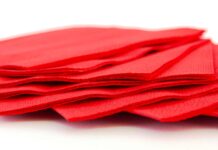A TW report
TW: What technical developments can we expect in converting for 2013 and beyond?
PCMC’s operations director Luca Tagliasacchi: “One of the sections on which the work of our R&D department has been focusing in the past year is the unwinder. To the existing stop- splice device for reel change, a new one has been added: the on-the-fly automatic change. The stop-splice change requires only 1.5 minutes downtime of the line and allows an increase in production varying from 5.80% for single ply to 8.30% for two- ply reels. This device can be installed “progressively”, i.e. on a modular basis, even on existing lines without any changes to their layout.
“The new on-the-fly splice allows reel change with the line running at a reduced speed, which means in zero time. As soon as the running reel reaches the diameter of 1100mm, the new one can be loaded in waiting position, ready to be lowered for the splice. The estimated annual production increase in this case varies from 7.80% for single ply to 11.20% for 2 plies.
“Both solutions offer significant advantages: reel change is carried out in a defined time, which is no more dependent on the operator but constant and repeatable; the use of biadhesive tape allows a very quick and easy preparation of the waiting reel (during the unwinding of the “previous” one); the procedure is also cleaner, because glue is replaced by biadhesive tape; and, most important, it is carried out in the absolute safest conditions, because there is no direct intervention of the operator inside the guards.”
MTorres’ Joseph Gotshall, business development director USA: “In 2013, MTorres maintained its place as the global leader in unwinding, splicing and tension control. This year we are continuing to invest in the research, development and continued evolution of our tissue and nonwoven converting equipment. Automated roll loading, unwinding, splicing, tension control and spent core removal remain the areas we focus our efforts on in 2013.
“The greatest developments we have released to the market in 2013 are two new simplified and modular designs that offer a lower capital investment to clients in emerging markets. So now in addition to the already popular floor pickup model TSR-T “Tension controlled Splicing Rollstand for Tissue” that has been in production for more than 10 years and the cart based system “Universal Tissue Splicer” or UTS that has been in production for more than five years, MTorres has also brought to market the STS or “Simple Tissue Splicer” and later this year we will be publicly releasing details of the JTS as well. The JTS and STS are both low capital cost systems well suited for retrofitting existing converting lines to allow for higher speeds, better tension control, on the fly splicing, and therefore increased production. This addition gives MTorres’ clients both the highly automated customisable solutions they have been accustomed to and now a more standardised low capital cost design for increased flexibility.”
TW: What new ways are you ensuring that the quality of cut is consistent?
Tagliasacchi: “The renowned efficiency and quality of our LSX are due to a unique mechanical-electronic combination. The points of strength of this log saw are the management of the cutting system, of the cutting speed, and the mathematical model controlling the synchronism of the arm of the elliptical orbital blade, pushers and blade drive.
“With the control system further enhanced and thanks to the available wide range of motors, blade sizes and blade material options, the LSX is now able to offer the highest performances also on “border-line” consumer/ industrial products, as for example 200mm-diameter rolls. Excellent bias, cutting speed and cut cleanliness have proven to be the key factors for the success of several important projects carried out in the past few months.”
Gotshall: “MTorres focuses on all of the converting line equipment up to the embosser, therefore cut quality occurs on our partners’ side after we hand off the sheet. Our responsibility is to provide a perfect tension on the line even during the splice sequence so that the cut can be made consistently on our partners’ machines. So far this year MTorres has started up more than a dozen of these designs in production environments. These machines are running TAD and other structured tissues in one, two and three ply configurations. MTorres’ designs have been integrated with PCMC, Perini, Bretting, and many others. Our job is to make the cut easy for our partners by offering a constant web tension giving the end user more consistency.”
TW: What features are you incorporating to minimise downtime between changes in print design, embossing design or roll format?
Tagliasacchi: “Our embosser NT 6501 has further evolved and represents today the utmost technology available in embossing under many aspects. It is a fully-electronic non-hydraulic embosser, certified with a Performance Safety level D as regards to roll safety, which couldn’t be achieved by an embosser with a hydraulic system.
“This quick-change embosser features a fully electronic nip control system for embossing rolls, marrying rolls, distribution rolls, which replaces the previous hydraulic device. The system comprises servomotors, servo cylinders and load cells, thus offering the same level of precision and repeatability of any other electrical application. Pressures can be adjusted automatically so as to achieve the best speed/embossing ratio.
The system can work under high loads, with high levels of precision and repeatability; requires reduced checkout costs/time; allows friendly use and maintenance; comprises the same parts and components as the rest of the line.”
Gotshall: “From MTorres’ perspective the real key to minimising machine downtime is to not need to stop during normal production runs for issues such as tension swings, breakouts and roll loading. By eliminating all of this unnecessary starting and stopping (recall that MTorres equipment have splice reliability in excess of 99.5%) the line stop time for product changes (print, embosser, format) is easily absorbed.
Also because of our precise tension control loop the starting and stopping for necessary format changes does not need to produce waste due to instable log build on startup. In most instances the unwinds and splicing unit can remain threaded reducing operators’ need to focus on the unwinds at all during these changes.”
TW: Which particular automation features distinguish your converting technology, and how do they improve productive efficiency?
Tagliasacchi: “Efficiency is often a matter of automation, but not always. In our perspective, flexibility is another key factor for efficiency, and in this regard we believe that today our best achievement is represented by the Matrix and the Forte technological platforms. The possibility to progressively upgrade the line from 450 mpm up to 650 mpm, freely matching speed and number of cycles, makes the Amica Matrix a “futureproof” investment: a line able to grow with the company and follow the ever-changing production needs dictated by the market.
“On the other hand, the Forte offers the possibility to produce very different products (e.g. from traditional products to coreless ones) on the same line with quick changeover procedures.
“All this means more than simply efficiency: efficiency through flexibility, guaranteed in the long term.”
Gotshall: “Autoloading and unloading along with autosplicing and computer logic based tension controls remove the need for an operator to be involved in changing any draws manually and triggering splices manually. MTorres’ unwinds are not demanding of an operators’ time other than splice preparation which can be done in under two minutes in all situations. But, remember the machine is still producing at high speeds during the roll change so no productivity is lost.
Also by simplifying and automating the splice we have removed any variation from one operator to another. MTorres’ unwinds and splicers simply need to have rolls delivered to the carts and the tail introduced to the splicing table. Everything else is controlled through a PLC orchestrating exacting synchronous movements.”
TW: Identify one or two areas of technology in which your converting systems really stand out.
Tagliasacchi: “An outstanding feature among those recently developed lies in our coremaker technology. Our TDS model allows, thanks to its extreme versatility, to produce both single- strip and multi-strip cardboard cores, with strip number varying from 1 to 5. The machine’s simple design, quick mandrel change from 20 to 90 mm, automatic strip handling through load cells and strip guide translate into maximum flexibility while at the same time maintaining a high quality level. The slot coater and the use of the same type of glue along the whole core length reduce glue consumption to the minimum. The reduction in material consumption leads not only to immediate saving but also to important advantages in terms of logistics and transport.”
Gotshall: “Our entire family of products was developed to run structured substrates in wide web formats and all of these designs are powered by shaftless centre driven unwinds with expanding chucks. MTorres is the only machine manufacturer in the world that currently has centre driven unwinds running wide web TAD substrates in production in the tissue industry. Therefore even though our partners all have existing conventional belted unwinds they come to work with us in order to achieve the highest quality production for our joint clients. Many of MTorres’ designs can handle 120” diameter rolls and 120” wide webs with splice on the fly technology. These designs allow converting lines to run at the highest speeds without stopping for a splice and also have autoloading and autosplicing capabilities making for more consistent production even with new operators unfamiliar to the converting processes.”





























